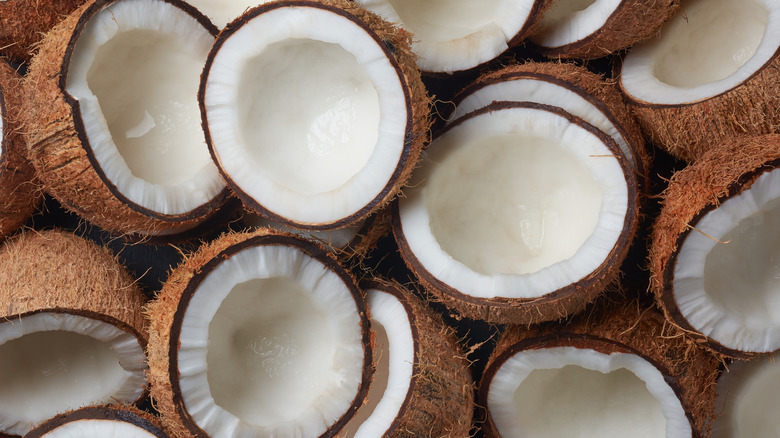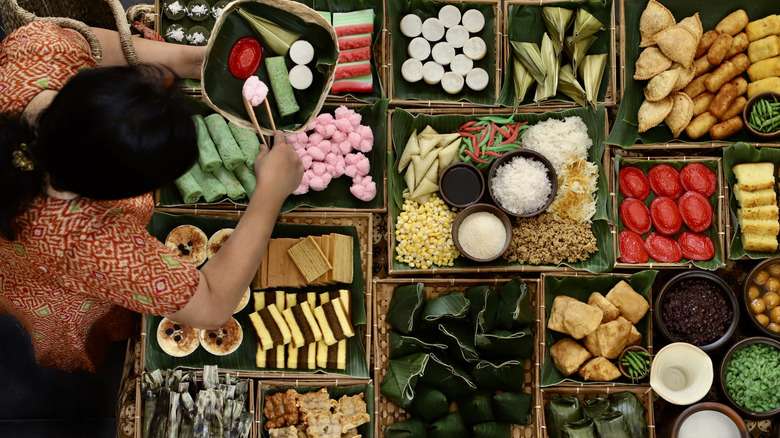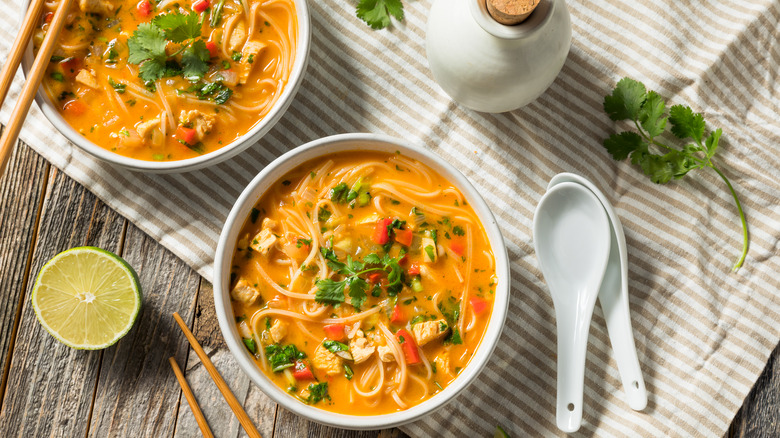The Country That Produces The Most Coconuts In The World
Do you know where your coconut oil or coconut cream is coming from? In all likelihood, Indonesia — the world's top coconut-producing country. In 2023, Indonesia harvested approximately 17.97 million metric tons of coconuts (per Statista). This placed it ahead of the Philippines, which is also a major player in global coconut production.
And though it has an impressive output, much of Indonesia's coconut farming is still managed by small farmers. A 2020 study for the International Conference on Sustainable Plantation found that about 98% of farmers work on small plots, often using traditional practices and palm varieties. Farming is particularly common in the Riau, North Sulawesi, and East Java provinces — the country's top coconut-producing regions.
Coconut production in Indonesia supports the livelihoods of over 6.6 million farmers and contributes more than $1.3 billion in exports to their economy annually. Efforts are underway to modernize the sector further with more hybrid seed varieties and replanting programs, aiming to increase yields even further.
The many uses of coconut in Indonesia
From root to crown, every part of the coconut tree is valuable, and Indonesia has capitalized on this versatility. Coconut products are exported in a variety of forms — from coconut oil to coconut milk, from desiccated coconut to higher-value products like virgin coconut oil and coconut flour. In fact, the global demand for coconut-based foods and beverages — including coconut water, milk, and butter — is only rising, pushing Indonesia to ramp up and diversify exports.
Even coconut shells are processed and sold — transformed into charcoal or activated carbon. Coconut husk is used to make doormats, car seat fillers, coir yarn, and coco peat — valuable materials in both domestic and international markets. And of course, the ever-popular coconut water is used in drinks, vinegars, and sauces.
In Indonesia, coconuts are not just an agricultural commodity to be exported — they're also a central part of cuisine and cooking. Traditional dishes such as nasi uduk, a fragrant rice cooked in coconut milk, and gudeg, a sweet jackfruit stew simmered in coconut milk, are local favorites. Or the delicious otak-otak — grilled fish cakes wrapped in banana leaves — relies on coconut milk for its signature taste.
How to enjoy various forms of coconut
Even if you're only using them in food, coconuts (be it the milk, the water, or the meat) are wildly versatile — excellent in dishes both sweet and savory. For sweets, coconut cream is ideal when whipped into a fluffy vegan dessert topping. It can also be used as a creamy milk substitute in almost any cake or cookie recipe. Alternatively, toast some coconut flakes in your air fryer to add texture and flavor to baked goods and desserts.
For more savory dishes, coconut milk reigns supreme as a rich, creamy milk replacement. Coconut milk can be stirred into a Swiss chard coconut curry, dashed into a tomato bisque, or mixed into a pasta sauce. And don't forget crunchy coconut shrimp — a crispy, sweet-savory classic that uses the milk to bread fresh shrimp for frying.
Finally, if you want to enjoy your coconut straight up, consider drinking some coconut water. As a natural source of electrolytes, it's a great way to rehydrate and replenish minerals lost through sweat during high heat.



